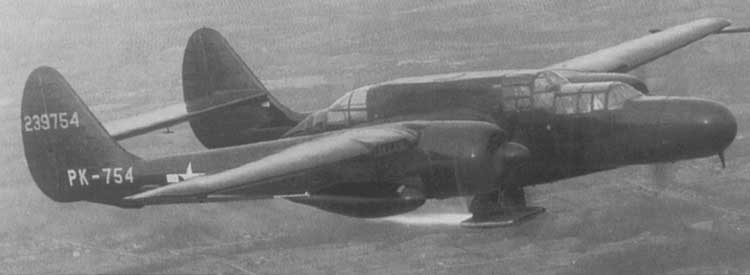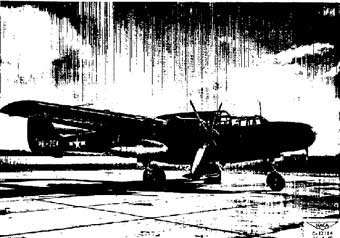

|
The Prototype of the first American designed night fighter took to the air on 22/5/1942, it's design dates back to a British requirement of 1940 for a night fighter with an endurance of eight hours, a preliminary specification was issued to Northrop on 22/10/1940 By the USAAC, the specifications were revised a number of times. A formal contract was signed on the 11/1/1941, with a order for 410 aircraft being made even before the prototype had flown! (50 of them were for the RAF under Lend-Lease, the RAF order was eventually canceled after a P-61 was supplied to the for tests in March 1944 until February 1945. The RAF was not too enthusiastic about its performance, and never ordered any P-61's for its own use, Mosquito was more than adequate for the task) The first P-61 went to the USAAF night fighter squadrons in the Pacific, with the 418th, 419th and 421st Night Fighter Squadrons being shipped out to the Southwest Pacific Area late in 1943, the first operational mission by the Black Widow took place out of Saipan on 24/6/1944. Around 410 Black Widows were made in all when production of the last version, the F-15 "Reporter" was abruptly canceled in 1947. |
|
The "Black Widow was used to test a number of American ramjet powered missiles and engines. The Navy borrowed two P-61Cs (43-8336 and 43-8347) from the USAAF and used them for air-launches of the experimental Martin PTV-N-2U Gorgon IV ramjet-powered missile, A P-61B (42-39754) was used by NACA's Lewis Flight Propulsion Laboratory in Cleveland, Ohio for tests of airfoil-type ramjets in 1947 One was even fitted with a Heinkel ejector seat from a He 162, modified for the tests, the seat being fitted in the forward gunner's compartment, on 17/4/1947 Sgt. Lawrence Lambert was successfully ejected from the P-61B. |
 |